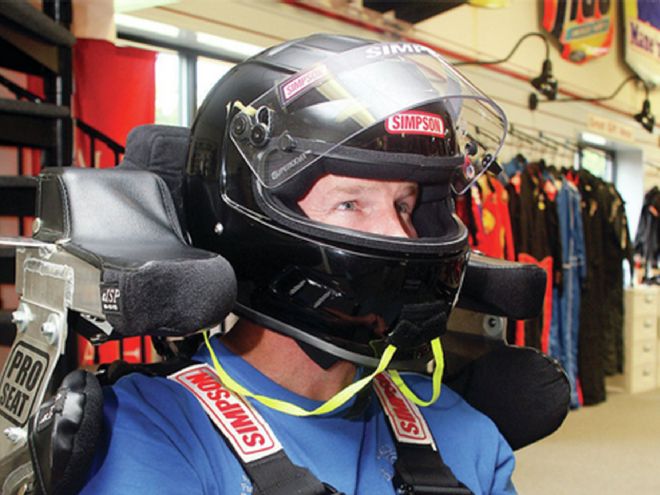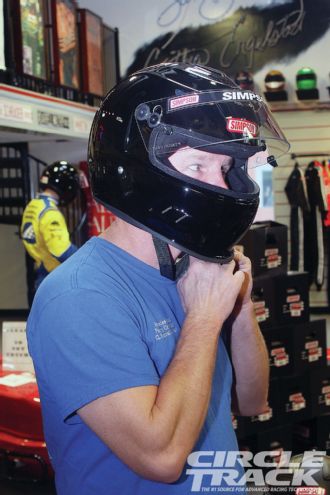
In order to maximize your protection, you must consider how your personal safety equipment work together
Often racers will take the “tech inspection” method for determining their personal protective equipment. You know the drill, value judgments often leave tracks and sanctioning bodies open for criticism, so to avoid that they try to provide their safety and tech inspectors with simple go/no go decisions. So the inspectors have a checklist and as long as you hit all the marks you are good to go.
For your personal protective equipment, it often goes something along the lines of: Helmet? Check. Firesuit? Check. Belts? Check. And on down the line.
But while just owning all the right pieces of equipment is often good enough for the tech department, the question becomes, is that good enough for you? After all, if you get injured on the track, you are the one that’s going to have to live with the pain and hospital bills. And if you can possibly avoid a several-thousand dollar emergency room bill or time out of work by spending a little more on your safety equipment, isn’t that a good investment? Yeah, we thought so too.
 4. Ashline recommended Simpson’s Speedway Vudo helmet as a good option to fit Gulledge’s requirements. For dirt track racing a smaller eye port is usually recommended because the helmet is stronger and protects better from flying debris than the Lexan face shield. Whether you are racing asphalt or dirt, you also want a helmet with a beefy, well-padded chin bar. This is part of the “safety as a system” concept we’re talking about. The head-and-neck restraint connects to your helmet, not your head, so it depends on the helmet to help hold your head in position. If you race an open-face helmet (never a good idea) you depend on the area over the forehead and the chin strap to help keep your head inside the helmet in a frontal impact. Obviously, if the chin strap is involved in keeping your head inside the helmet you are having a very bad day. On the other hand, if you have an impact where the head restraint is involved, a full-face helmet can spread the loading across your forehead, cheeks, and chin, greatly inc
4. Ashline recommended Simpson’s Speedway Vudo helmet as a good option to fit Gulledge’s requirements. For dirt track racing a smaller eye port is usually recommended because the helmet is stronger and protects better from flying debris than the Lexan face shield. Whether you are racing asphalt or dirt, you also want a helmet with a beefy, well-padded chin bar. This is part of the “safety as a system” concept we’re talking about. The head-and-neck restraint connects to your helmet, not your head, so it depends on the helmet to help hold your head in position. If you race an open-face helmet (never a good idea) you depend on the area over the forehead and the chin strap to help keep your head inside the helmet in a frontal impact. Obviously, if the chin strap is involved in keeping your head inside the helmet you are having a very bad day. On the other hand, if you have an impact where the head restraint is involved, a full-face helmet can spread the loading across your forehead, cheeks, and chin, greatly inc
So you should expand that safety checklist to include real value judgments. Fine, you own a helmet, but is it showing a spider web of fine stress cracks from the time you threw it on the ground in frustration after a bad heat? Or, you have a five-point harness but do you ever spend the time to check for fraying webbing around the adjusters and mounts? How about the gloves you have to show the inspector but never bother to put on and leave in the trailer whenever you take the track? You get the idea.
Another concept to consider beyond the quality of your individual pieces of personal protective equipment is how well it all works together as a system. “No matter how good it is, no piece of safety equipment will be able to protect you from everything,” explains Trevor Ashline, the Vice President of Engineering and Product Development at Simpson Performance Products. And he should know, Ashline has been a major innovator in the field of racer safety for years. He invented the “Hutchens Device” one of the first head restraint systems available after the tragic death of Dale Earnhardt Sr. and has continually found better -- and more comfortable -- ways to protect racers ever since.
“If it is designed well and installed correctly, all of your safety equipment works together to provide you the best possible protection,” Ashline adds. “A good racing seat keeps your body contained, but it requires your belts to hold you in the seat. A head-and-neck restraint will do its job, but it requires a helmet to keep your head positioned properly. You have to think about the system comprehensively and how it all works together.”
Circle Track has been working with racer Jason Gulledge as he builds a new Super Street Monte Carlo for racing on dirt. We’ll be documenting the car build in future issues, but for now Gulledge’s first order of business was replacing his out-of-date racing helmet and a head-and-neck restraint system. We contacted Ashline and he happily shared his knowledge and experience gained from decades of research and development into keeping racers safe when the unexpected happens.
How to Install Head Restraint Helmet Anchors
If you purchase a Simpson helmet, you can have any of the three anchors installed from the factory. But you may already own a helmet and want to add a head-and-neck restraint system. Or you may prefer another brand. In that case, Simpson’s Holli McAllister showed up the right way to install head restraint anchors properly.